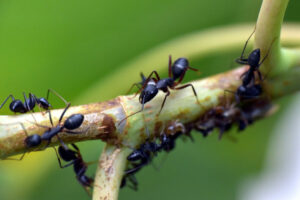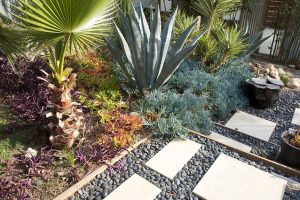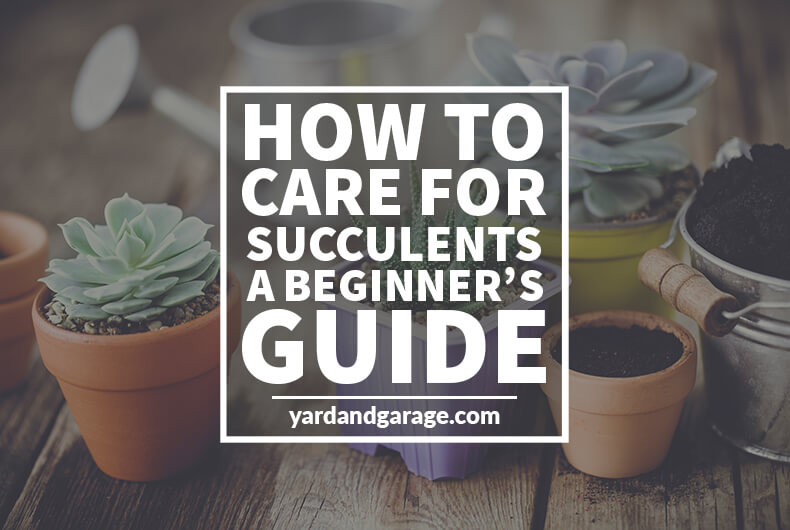
Is your green thumb under-performing? In recent years, the growing of succulents has gained considerable popularity. This is largely due to their attractiveness, the ease of caring for them and the huge variety of species available.
The name ‘succulent’ comes from the plants’ fleshy organs, which are used to store up water in arid conditions. Cacti are a well-known type of succulent.
Since they’re built to survive long periods of drought, these plants are far more low-maintenance than your average houseplant. If you have a busy schedule or simply don’t want to commit to nurturing a more demanding plant, succulents may be for you.
However, if you want your plants to thrive then it’s important to know how to take care of them properly. Here an overview of some of the key things to be aware of when growing succulents.
Exposure to Light
Different species of succulent require different levels of light exposure, so it’s best to research the species you’re growing to find out how much light they need. You can also try moving your plants around to see where they do best.
All species require a reasonable amount of bright natural light; if your succulents are indoors, put them on a windowsill or in another location that gets plenty of sunshine. If they’re outdoors, choose an area that isn’t too shady. It’s best to avoid leaving them in direct sunlight, however.
There are a few signs you can look out for to determine whether your succulents are receiving the correct amount of light. If they begin to develop a ‘bleached’ appearance, then their tissues have been damaged; this indicates that they have been exposed to too much light.
Conversely, if they start to grow towards the sun, with their leaves becoming more widely spaced, they are not getting enough light. In this case, move them to a sunnier place and prune away the excess growth. If your plants have a shriveled appearance, this could also be a sign that they are not getting the right amount of light.
Temperature
Since succulents are desert plants, some people assume they prefer hot temperatures. However, nighttime temperatures in the desert are very low, so colder nights should not pose a problem for your plant. In fact, succulents prefer it if there’s a significant difference between daytime and nighttime temperatures.
The ideal daytime temperature range for succulents is 70-85°F, whilst their preferred nighttime temperature is 50-55°F (though they can easily survive in temperatures as low as 40°F). However, this only applies if the plants are dry – succulents don’t do well in wet conditions. Additionally, if nighttime temperatures frequently rise above 65°F then it’s unlikely that your succulents will bloom. Daytime temperatures have less of an influence on their growth and development.
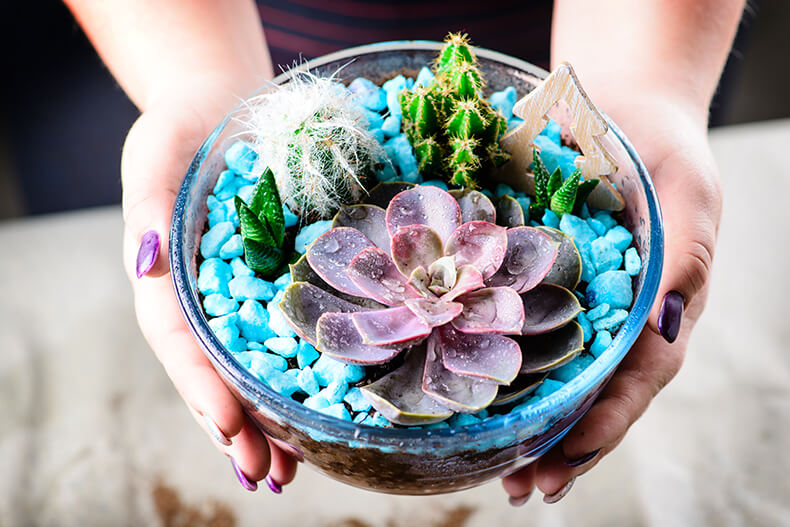
Optimal temperatures alone are not enough – most succulents also need good ventilation in order to thrive. For this reason, they should be placed somewhere where air can freely circulate around them, and plenty of space should be left between plants. Again, there are differences between species when it comes to temperature tolerance, so do some research if you’re not sure what conditions your plant prefers.
Watering
Though succulents are built to survive drought, they still need to be watered. However, the regularity with which you should water them depends on the time of year, since they are ‘in season’ in the summer months and ‘out of season’ in the winter. They grow whilst they are in season and lie dormant in the colder months.
If your succulents are in season, they should be watered around once a week – perhaps more frequently for larger plants. Thoroughly wet the soil around your plant so that water drains out of the holes in the bottom of the pot.
Be careful not to overdo it – the soil should be wet rather than soaked. It’s important to use pots with good drainage when growing succulents – otherwise, they may fail to grow and eventually die. If possible, use a soil mix designed for succulents, as ordinary mixes may not allow water to drain properly.
When your plants are out of season, they can be watered as rarely as once every other month. You can even wait until the soil has totally dried out before watering them. Watering more frequently is likely to lead to rot, which is the commonest reason why succulents die.
If your plant feels abnormally soft and its leaves have lost their color, it’s likely that it has been over-watered and rot has set in. You can determine whether this is the case by taking it out of its pot and looking at the roots. If they’re dead and brown, they are rotting and should be cut off. You should then move your plant into drier soil. If the rot has advanced too much, your succulent may not recover.
If a plant stops growing whilst it is in season, or its leaves begin to fall off, it needs to be watered more often. Brown spots on the leaves are also a sign that a plant isn’t receiving enough water.
Propagation
Many species of succulent can easily be propagated. There are numerous ways of doing this, including taking cuttings, offsets, division, and grafting.
Taking cuttings is perhaps the quickest method, producing new plants which are genetically identical to the original one. This should be done when the plant first comes into season, which is usually in the springtime. It’s important to sterilize the tools you use in order to avoid infection.
Cuttings
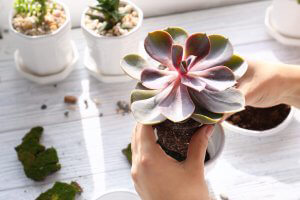 Many species can be propagated by cutting away a piece of the stem just below the joint. There are some species can also be propagated from a single leaf.
Many species can be propagated by cutting away a piece of the stem just below the joint. There are some species can also be propagated from a single leaf.
The cutting should be left for a couple of days to allow the cut end to seal – this makes a fungal attack less likely.
It can then be planted in a suitable potting mix such as fine grit. If you’d like to give a plant to a friend, taking cuttings is the ideal way to do it.
Offsets
Some species of succulent have small plants growing at the base of the main plant. In other species, miniature plants may grow on the leaves, flowers or stems. These small plants – known as offsets – can be removed, left to dry and then potted. Taking these away is beneficial for the parent plant as the offsets would otherwise consume a lot of energy and resources. This can slow down or even halt the plant’s growth.
Division
Some species can be propagated by division of their roots. The first step is to take the plant out of the pot and remove any excess soil. Depending on the species, it may naturally break up into cuttings, allowing you to simply select one with good roots. Otherwise, you will need to cut away a section of root.
This should be done when the plant is not in season – otherwise, it may lose too much sap and become weakened. After a few days, the root can be potted. Be careful not to water it too much until you see some signs of new growth.
Grafting
Grafting is a more complex method of propagation, which involves combining two compatible species of succulent to produce a new plant. Certain species can only be propagated in this way. Usually, the two specimens must be in the same genus for grafting to be successful.
There are a few different ways of doing it, but because of its relative complexity, it may be best not to attempt it unless you have some previous experience of plant propagation.
There are several other methods of propagating succulents, which you can read up on if you’re interested.
Feeding
While in season, succulents should be fertilized in the same way as other houseplants. Fertilizer can be added every other time you water your plants.
At the start of the growing season, use a balanced fertilizer to help stimulate their growth. After you’ve done this a few times, switch over to a fertilizer which is low in nitrogen and high in potash. You can even buy fertilizers which are specifically designed for cacti and succulents; these are likely to be the safest option for feeding your plants.
Succulents should not be fed at all between October and March, as they do not grow in the colder months. Doing so is a waste of feed and may even be detrimental to the plant.
Conclusion
Succulents are very simple to take care of; if you follow a few basic guidelines, you’ll soon be the proud owner of some thriving plants.
Once you’ve got to grips with the basics, you can fine-tune your approach by looking into other factors, like the best type of live soil for your plant. Remember to keep an eye out for pests like aphids and slugs, which can eat away at your pride and joy.
And finally, be aware that the needs of different species do vary – research the type of succulent you plan to grow to ensure you’re fully able to meet its needs.


